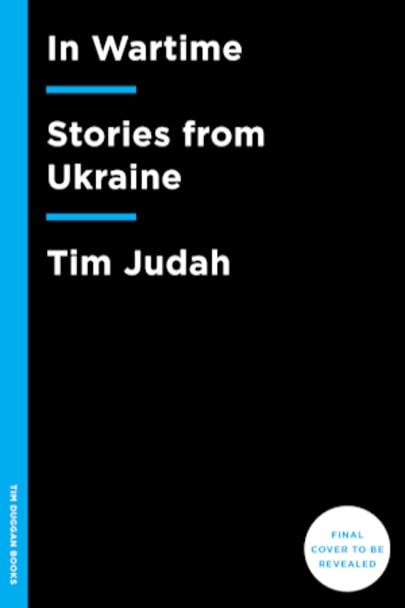From one of the finest journalists of our time comes a definitive, boots-on-the-ground dispatch from the front lines of the conflict in Ukraine. Ever since Ukraine’s violent 2014 revolution, followed by Russia’s annexation of Crimea, the country has been at war. Misinformation reigns, more than two million people have been displaced, and Ukrainians fight one another on a second front—the … a second front—the crucial war against corruption.
With In Wartime, Tim Judah lays bare the events that have turned neighbors against one another and mired Europe’s second-largest country in a conflict seemingly without end.
In Lviv, Ukraine’s western cultural capital, mothers tend the graves of sons killed on the other side of the country. On the Maidan, the square where the protests that deposed President Yanukovych began, pamphleteers, recruiters, buskers, and mascots compete for attention. In Donetsk, civilians who cheered Russia’s President Putin find their hopes crushed as they realize they have been trapped in the twilight zone of a frozen conflict.
Judah talks to everyone from politicians to poets, pensioners, and historians. Listening to their clashing explanations, he interweaves their stories to create a sweeping, tragic portrait of a country fighting a war of independence from Russia—twenty-five years after the collapse of the USSR.
more



The war in Ukraine still stutters on three years after its beginning following the 2013-4 Euromaidan rebellion that brought down that country’s kleptocratic president. We in the West don’t hear about it anymore unless the chronic disease becomes acute, such as the recent exchanges of shelling in the east. Even when the war in the Donbass was blazing hot and fast on our TV screens back in 2014-5, all most of us west of the Danube ever knew about it was framed in the larger U.S.-versus-Russia geopolitical game.
In Wartime presents the background behind the shaky cell-phone footage of burning buildings and dying men. It tries to answer the great question that underlays all the political and military wrangling: how did Ukraine, a nation that should be so rich, end up being such a basket case?
In a series of essays organized by region, the author assembles the depressing but convincing answer: the state of arrested chaos in Ukraine today is not only normal but practically inescapable, given the nation’s grim history over the past two centuries. Like many other central and eastern European nations, Ukraine has been repeatedly invaded, partitioned, and had its borders shift hundreds of miles; it has alternately repressed and been repressed by a series of other nations and peoples; it’s known revolts, short-lived breakaway “republics” from across the political spectrum, civil war, world war, massacres, pogroms, and two devastating man-made famines; and it’s been misruled by tyrants and thieves both foreign and home-grown for centuries. The current state of the nation would be familiar to the great-grandparents of today’s combatants.
Tim Judah, the Balkans correspondent for The Economist, has seen all this before, in the benighted former Yugoslavia as it spectacularly committed suicide in the 1990s. He knows how to navigate this kind of broken ground, who to talk to, what questions to ask. He talks to both officials and common citizens, the young and the old, the well-off and the poor. Through these interviews, we get an affecting portrait of a people that’s tired of the fighting, can’t see their way out of it, but can still glimpse some hope for the future, even though they can’t agree on how that hope will arrive.
Judah writes like a journalist. The many essays that make up this book read like extended human-interest features in a magazine like The New Yorker. The effect is pointillistic: a quote here, a poignant sight there, a bit of history to explain a particular point, some fact-checking. When you pull back, the dots become a picture. He reports what his interviewees say, but he later debunks their more egregious lies and fantasies (which are distressingly common; weaponized history and fake news are like air there, especially in the eastern part of the country).
For a book called In Wartime, there’s remarkably little war reporting. We’re well into the second half of the book before we arrive at the front as it existed in late 2015. That’s fitting in a way. It seems the actual fighting is almost beside the point; the real action is in the posturing and issuing of manifestos and spinning of narratives that are long on grievance and short on substance or strategy. Still, if you’re looking for a blow-by-blow of battles and weapons and which militias did what, you won’t find it here. Also on the negative side of the ledger: the pictures are too few, too small and uncaptioned, and there’s no index worthy of the name, which makes referring back to a name or incident very hard, indeed.
There’s no uplift in this book. When you finish the last page, you’ll be ready to wash your hands of the place and write it off as an irredeemable mess. Other reviewers have criticized this book for not having a single throughline. It does, but that throughline is so bleak that you may wish it wasn’t there at all. As an easily readable guide to one of the globe’s intractable conflicts, though, In Wartime is an excellent resource to get you started.